What's New
Displaying results 3521 - 3530 of 4052

Resource | Publications,
In 2008, the National AIDS Programme (NAP) conducted behavioral surveillance survey in Yangon, Mandalay, Monywa, Meiktila, and Lashio to assess trends of knowledge, attitude, and practices among out-of-school youth (OSY) population.
There are 3,495 males and 3,459 females that participated. The median age of male and female respondents was 19 years and 20 years. 35% of male and 34% of female had a high school education.
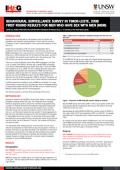
Resource | Fact Sheets,
In 2008 a behavioural surveillance survey of men who have sex with men was conducted in Timor-Leste. The survey collected data on sexual and drug-using practices; levels of knowledge relating to sexually transmissible infections (STIs) and HIV; access to medical services, attitudes towards people with HIV; and demographics.
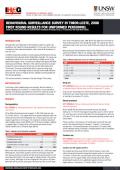
Resource | Fact Sheets,
In 2008 a behavioural surveillance survey among uniformed personnel in Timor-Leste was conducted by the University of New South Wales, Australia. The survey was conducted on behalf of the Timor-Leste Ministry of Health as part of the national HIV program, which is funded by the Global Fund Against HIV/AIDS, Tuberculosis and Malaria.
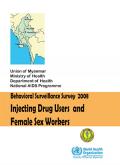
Resource | Publications,
To monitor the trajectory of the HIV epidemic among higher risk groups, the National AIDS Programme (NAP) has a two-prong surveillance system which consists of HIV sentinel serosurveillance and behavioural surveillance surveys (BSS). Both are critical components for assessing and evaluating the overall impact of the national response to HIV and AIDS. The previous round of BSS, in 2003, were conducted among the general population. Between late 2007 and the first quarter of 2008, BSS was conducted in female sex workers (FSW) and injection drug users (IDU), for the first time by the NAP.
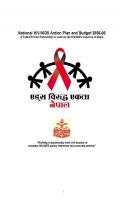
Resource | Tools,
The National HIV/AIDS Action Plan and Budget for 2005-2006 was produced following extensive consultation about the extent of the problem, and what needs to be done about it. Stakeholders – i.e. government officials, representatives of beneficiary groups, broader civil society actors, and donor partners – are all agreed that the Action Plan provides the single point of reference for the HIV/AIDS response in Nepal.
The 2005-06 Action Plan addresses needs and issues that have emerged as a result of the current broader social, economic, and political context of the country and of developments within the community of stakeholders in HIV and AIDS.
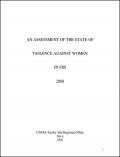
Resource | Publications,
Over the last 20 years, violence against women (VAW) has been increasingly recognized as major health, human rights and development issues. The Secretary General’s In-depth Study on all forms of violence against women recommends intensified action to eliminate violence against women at all levels. The General Assembly's resolution urges United Nations (UN) entities to enhance coordination and intensify their efforts to eliminate violence against women in a more systematic, comprehensive and sustained way. It further calls upon UN entities to extend coordinated efforts to assist States in their efforts to eliminate violence against women.
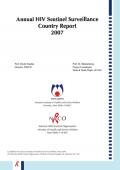
Resource | Publications,
The Annual Sentinel Surveillance for HIV was started in the country in 1998 using standardized methodology. It is conducted by the National AIDS Control Organization (NACO) and the States AIDS Control Societies (SACS). National Institute of Health and Family Welfare (NIHFW) has been associated with it for data collection, monitoring, analysis and preparing the country report since 1998.
The Annual Sentinel Surveillance 2007 round was carried from 1st October 2007 to 15th January 2008 in all the states in India.

Resource | Publications,
Public Health Watch, a project of the Public Health Program of the Open Society Institute, aims to strengthen meaningful and sustained engagement by infected and affected communities in the development, implementation, and monitoring of TB and HIV policies, programs, and practices. Public Health Watch supports advocates to identify, document, and articulate priority human rights issues, and to press for accountability at the national, regional, and global levels. Public Health Watch believes engaged, well-informed individuals and community groups are needed to ensure that government policies really live up to the commitments made at the international level; to scrutinize whether and how policies and guidance are implemented; and to point out where the numbers may not reflect the full reality on the ground.
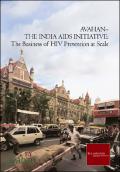
Resource | Publications,
In 2003 the Bill & Melinda Gates Foundation began its large HIV prevention program, the India AIDS Initiative, later called Avahan, to curtail the spread of HIV in India. At the time, there was an understandable sense of urgency about the rising prevalence of HIV in the world's second most populous country.
Avahan has successfully built a large-scale HIV intervention program in its first five years. It operates in six states in India, which have a combined population of 300 million people. Within these states, it provides prevention services to nearly 200,000 female sex workers, 60,000 high-risk men who have sex with men, and 20,000 injecting drug users, together with 5 million men at risk.
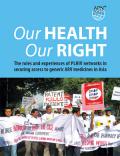
Resource | Publications,
This book aims to inform networks of people living with HIV (PLHIV) and concerned civil society organisations about how patents can make their medicines more expensive and what they can do about it. It provides a step-by-step basic guide to enable these stakeholders to minimise the number of medicines that are patented in their country, and still ensure that medicines are affordable even if they are patented. The book also explains how some free trade agreements and other treaties can make medicines even more expensive.
This book gives concrete examples of how PLHIV networks in partnership with key partners have reduced the impact of patents on medicines, including for medicines for the wider population in Thailand and India. It provides a clear illustration of how small local and national actions led by PLHIV can generate tremendous global impacts in today's borderless and inter-connected world.





